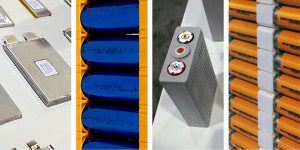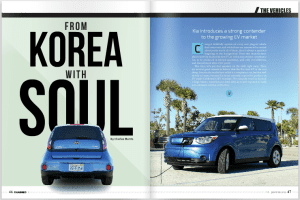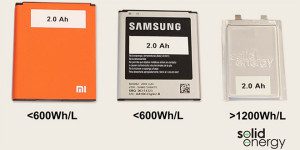Researchers from the University of Waterloo and GM’s Global Research and Development Center have developed a new silicon-based anode material that they say could enable batteries with almost 10 times more energy density than today’s state of the art. In “Evidence of covalent synergy in silicon–sulfur–graphene yielding highly efficient and long-life lithium-ion batteries,” published in… Read more »
Search Results Found For: "graphite"
Enevate says its batteries can charge 5-10 times faster than conventional Li-ion
California-based Enevate Corporation has announced an “ultrafast charging” feature for its batteries, which has been demonstrated to provide a 90% charge in 15 minutes while increasing capacity compared to current Li-ion batteries. Enevate’s HD-Energy Technology uses silicon-dominant composite anodes, and the company claims an 25-50% increase in energy density over conventional graphite anode cells. The… Read more »
Is Nissan teasing details of 2nd generation LEAF?
Nissan recently invited a small group of journalists to its Advanced Technology Center in Atsugi, near Tokyo, ostensibly to show them the IDS concept vehicle now on display at the Tokyo Motor Show. However, Bertel Schmitt, an old Japan hand, soon surmised that the reporters were looking at “the future Nissan LEAF in drag,” and… Read more »
Scrap tires transformed into supercapacitor electrodes
Some of the 300 million tires discarded each year in the US could be recycled and used in electrodes for supercapacitors, using a new technology developed at Oak Ridge National Laboratory and Drexel University. The process is described in a paper published in ChemSusChem, titled “Waste Tire Derived Carbon-Polymer Composite Paper as Pseudocapacitive Electrode with… Read more »
Tesla tweaks its battery chemistry: a closer look at silicon anode development
In mid-July, Tesla Motors made a trio of Model S update announcements. The new options included a 70 kWh rear-wheel-drive base model, an upgrade for the high-end battery pack from 85 to 90 kWh (providing about a 6% increase in range), and Ludicrous mode, which offers a 10% improvement in the car’s 0 to 60… Read more »
New hollow-structured nanomaterial greatly reduces volumetric expansion in anodes
Battery tech startup Lionano has announced an agreement with Cornell University’s Center for Technology Licensing (CTL) to develop and produce a “drop-in” anode material for Li-ion batteries. The new material is a hollow-structured metal oxide that can substantially reduce the volumetric expansion of a conventional anode. According to Lionano, it can deliver a capacity of… Read more »
Chinese battery-maker orders Separion ceramic composite separators from Electrovaya
Canadian manufacturer Electrovaya has announced a major order for its Separion ceramic composite separators from an unnamed Chinese battery company. Electrovaya acquired the Separion intellectual property from a company called Evonik in April. According to Electrovaya, most cells made with a graphite anode and a Nickel Manganese Cobalt (NMC) cathode have cycle life between 3,000… Read more »
2015 Kia Soul EV: A strong contender in the growing EV market
Charged faithfully reports on every new plug-in vehicle that comes out, and while there are reasons to be excited about pretty much all of them, there’s always a question lingering in the background: Does this manufacturer plan to actively market its new EV, or is this just another compliance car, to be produced in limited… Read more »
SolidEnergy hopes to double EV battery range by 2017
SolidEnergy, an MIT spin-out company commercializing solid electrolyte technology, plans to release a 20 Ah EV battery in 2017, which it says will offer more than two times the range of current Li-ion batteries. The core of SolidEnergy’s technology is a Solid Polymer Ionic Liquid (SPIL) electrolyte, which enables the use of an ultra-thin lithium… Read more »
Researchers develop dendrite-free lithium films, an important step toward lithium metal anodes
There’s a lot of interest in using lithium metal as an anode material, because of its theoretical high capacity of 3,860 mAh g−1 (around ten times that of the graphite anodes used in typical Li-ion batteries). However, it doesn’t measure up in terms of cycle life and safety requirements, and one reason is the formation of… Read more »











